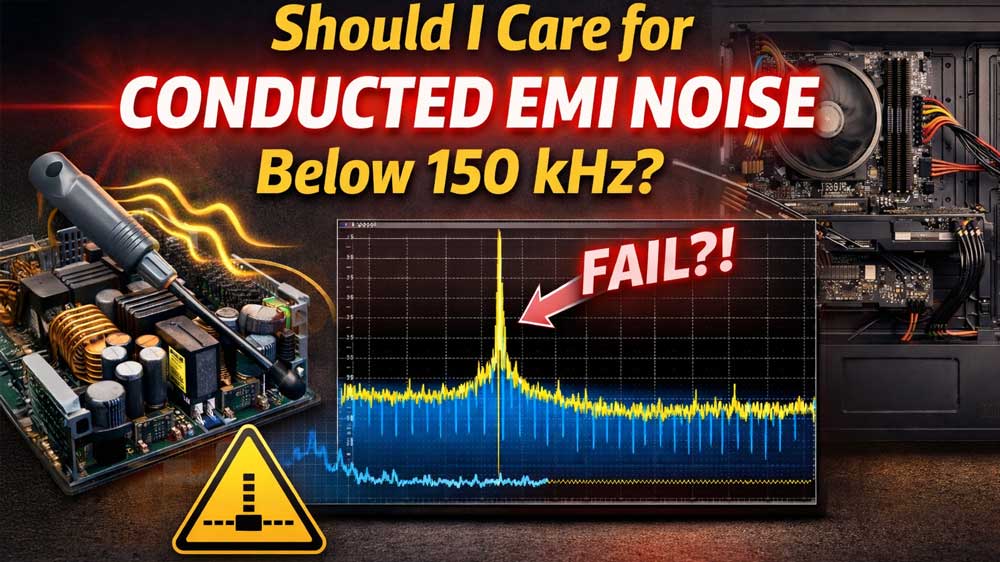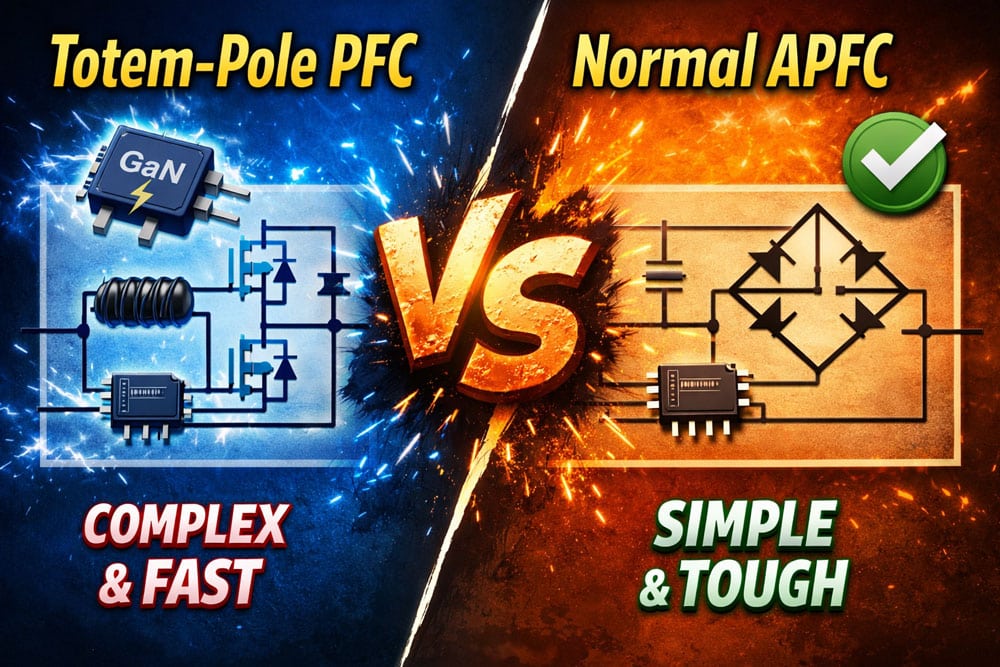Protection Features
| OCP (Normal @ 30.1°C) | 12V: >124.60A (150.12%), 12.003V 5V: 26.8A (134.00%), 4.981V 3.3V: 24.7A (123.50%), 3.325V 5VSB: 4.3A (143.33%), 5.009V |
| OCP (Hot @ 44.6°C) | 12V: 124.00A (149.40%), 12.003V 5V: 26.8A (134.00%), 4.973V 3.3V: 24.3A (121.50%), 3.329V 5VSB: 4.2A (140.00%), 5.005V |
| OPP (Normal @ 30.5°C) | 1503.07W (150.31%) |
| OPP (Hot @ 42.3°C) | 1401.10W (140.11%) |
| OTP | ✓ (135°C @ Secondary Side) |
| SCP | 12V to Earth: ✓ 5V to Earth: ✓ 3.3V to Earth: ✓ 5VSB to Earth: ✓ -12V to Earth: ✓ |
| PWR_OK | Proper Operation |
| UVP (Full Load @ 90V) | ✓ |
| UVP (Damage @ 80V) | ✓ |
| Conducted Emissions EN55032 & CISPR 32A | ✓ |
| NLO | ✓ |
| Fan Failure Protection | ✗ |
| SIP | Surge: MOV Inrush: NTC & Bypass Relay |
The 12V rail’s OCP triggering points are high under normal and hot temperatures. SAMA should keep them within 130-135%, with a notable difference between normal and high temperatures. The OCP triggering points on the minor rails are not high, but the differences between normal and high temperatures are low, so the provided protection is not as effective as it should be.
The over power protection is set sky-high. It should be set way lower. At least, there is a high difference between high and normal temperatures here. The rest of the protection features are present, except for fan failure, which is essential to any PSU.
EMC Pre-Compliance at a Glance
Every electronics device, including PSUs, can be an EMI source, which, depending on the amount of EMI emitted, can affect the proper operation of nearby devices. EMI can, in some extreme cases, even render them unusable. Some standards have been established to minimize EMI noise. The corresponding standards for IT (Information Technology) products are CISPR 32 and its derivative EN 55032, which is for products sold in the EU. In the EU, every product featuring the “CE” marking has to comply with the EN 55032 standard. CISPR 32 and EN 55032 standards divide devices into two classes, A and B. B-class equipment is for domestic environments, so their permitted EMI emissions are significantly lower than for A-class devices.
Our equipment for EMI readings:
- Rohde & Schwarz FPC1500 (loaded with all options)
- Tekbox TBLC08 LISN
- Tekbox TBFL1 transient limiter
- Tekbox EMCview software
| CISPR 32 / EN55032 Limits | ||
| CISRP 32 / EN 55032 Class A Conducted EMI Limit | ||
| Frequency of Emission (MHz) | Conducted Limit (dBuV) | |
| Quasi-peak | Average | |
| 0.15 – 0.50 | 79 | 66 |
| 0.50 – 30.0 | 73 | 60 |
| CISPR 32 / EN 55032 Class B Conducted EMI Limit | ||
| Frequency of Emission (MHz) | Conducted Limit (dBuV) | |
| Quasi-peak | Average | |
| 0.15 – 0.50 | 66 – 56 | 56 – 46 |
| 0.50 – 5.00 | 56 | 46 |
| 5.00 – 30.00 | 60 | 50 |
| CISRP 32 / EN 55032 Class A 10-Meter Radiated EMI Limit | ||
| Frequency of Emission (MHz) | Field Strength Limit (dBuV/m) | |
| 30 – 88 | 39 | |
| 88 – 216 | 43.5 | |
| 216 – 960 | 46.5 | |
| > 960 | 49.5 | |
| CISRP 32 / EN 55032 Class B 3-Meter Radiated EMI Limit | ||
| Frequency of Emission (MHz) | Field Strength Limit (dBuV/m) | |
| 30 – 88 | 40 | |
| 88 – 216 | 43.5 | |
| 216 – 960 | 46.0 | |
| > 960 | 54.0 | |
Please note that the ATX spec allows a 4 dB margin for conducted and radiated emissions. This means that if a PSU exceeds the limits but stays within the 4 dB margin, it meets the corresponding ATX spec requirement (8.1 Emissions).
EMI Results
The PSU’s conducted emissions are a bit higher than the corresponding limits with the average detector, but the ATX v3.1 spec allows a 4 dBmV margin.



